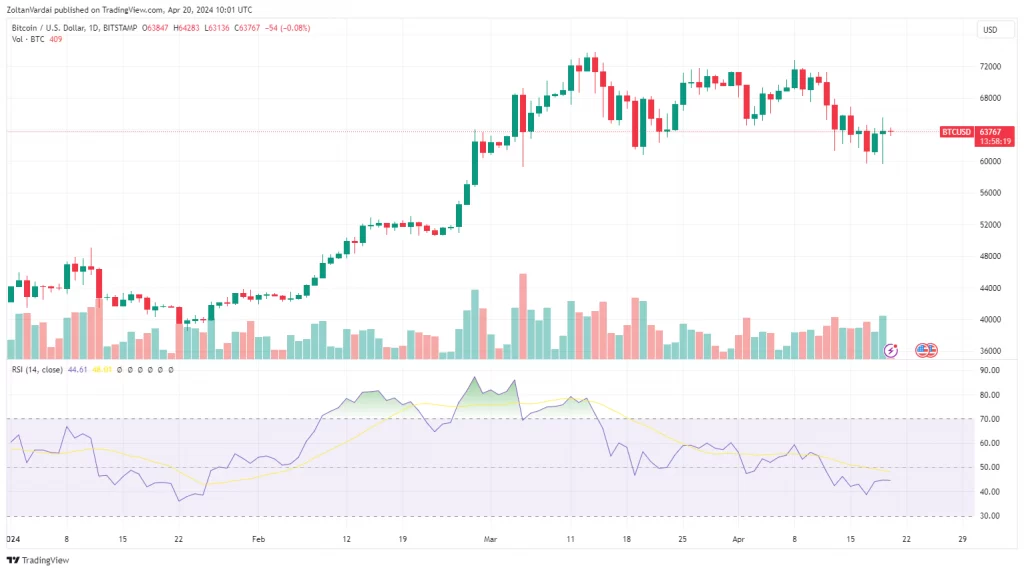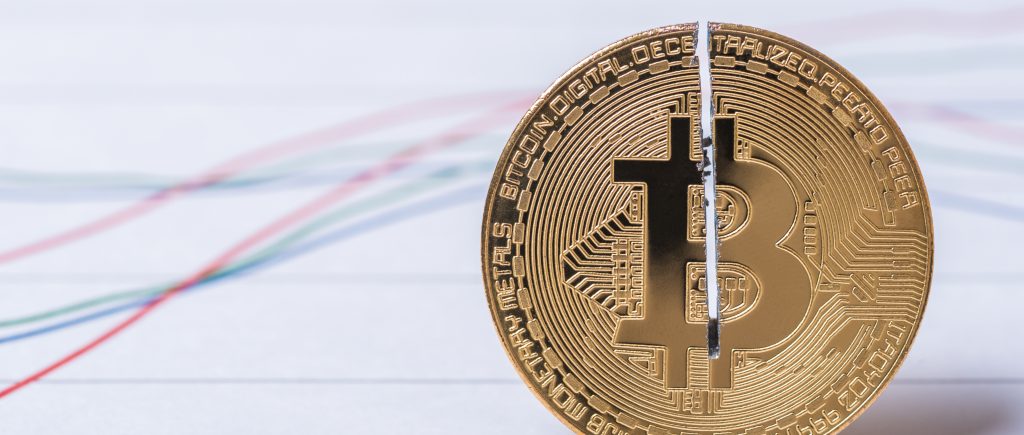Since last halving, i. e. halving Bitcoin mining rewards, the world’s most popular cryptocurrency has been showing a great deal of strength and momentum due to the upbeat effect of this technological process that is repeated approximately every four years.
The largest cryptocurrency, in terms of transaction volume, was halved on April 14, which increased excitement in the cryptocurrency space. But, investors should learn more about this procedure, how it takes place, and the extent to which it may affect market movements.
Since its halving, Bitcoin has been moving in a trading range that highlights the upward momentum that may be on its way, which pushes current prospects towards driving the largest cryptocurrency, in terms of transaction volume, in the crypto assets market towards record 70,000 level again soon.
Bitcoin recorded a decline on Wednesday to $64,259, which is representing the lower limit of the trading range in the period from the halving until the end of Wednesday. The upper limit of this range was $65,749, while the lowest level for the most important cryptocurrency in the world reached $61,274, compared to the highest levels at $66,855, indicating levels close to the records it had previously achieved.
What is Bitcoin halving?
Bitcoin halving is an event labeling the mechanism programmed into a cryptocurrency protocol that will reduce cryptocurrency mining rewards by 50%. These rewards are essentially new Bitcoins added to the blockchain networks operating cryptocurrency trading platforms. This means that the income earned by miners working in this sector will be halved, while the units expected to be added to blockchain networks will also be halved.

When does Bitcoin halving happen?
Bitcoin halving is not related to any specific date, but rather follows a mechanism programmed into the blockchain network protocol, as the protocol is modified after every 210,000 blocks are added to the networks, which happens approximately every four years.
The Bitcoin network has been through four halving events so far:
November 28, 2012: The mining reward decreased from 50 BTC to 25 BTC.
July 9, 2016: Mining reward decreased from 25 BTC to 12.5 BTC.
May 11, 2022: Mining reward decreased from 12.5 BTC to 6.25 BTC.
April 14, 2024: Mining reward decreased from 6.25 BTC to 3.125 BTC.
Expected influence of Bitcoin halving
Bitcoin halving could have major impact on the cryptocurrency market; including the rise in the price of the most important crypto currency in the world, and it may also lead to a state of uncertainty dominating crypto asset with potential fluctuations that may lead to a sharp fluctuation in the price movement.
Impact on Bitcoin miners:
Cryptocurrency mining activity also turns into a less profitable activity after the reward halving, which may prompt some miners to stop working.
Expected effects on the market:
Bitcoin halving is expected to have short-term effects, including a potential increase in the value of the Bitcoin price, as halving is associated with a reduction in the number of new Bitcoin units put on the market. As the supply of Bitcoin decreases, prices rise. The markets are also witnessing sharp fluctuations due to the uncertainty that dominating the crypto space. Bitcoin mining rewards are declining, which reduces the profits of workers in the sector and may distract them from this sort of work.
In the long term, halving Bitcoin helps maintain its value in the markets due to its limited supply. Halving also reduces inflation in the world of digital assets. Investors’ confidence in this type of asset is strengthened after halving, due to what this procedure reveals about the technological system upon which the operation of cryptocurrency networks depends and the impression that it involves a great deal of care and concern for the value of these assets.

The effect of halving in numbers
2012 Halving: The price of Bitcoin rose from around $10 before the halving to nearly $1,200 one year later.
2016 Halving: The price of Bitcoin rose from around US$600 before the halving to nearly US$20,000 in late 2017.
Halving 2020: The price of Bitcoin rose from around $9,000 before the halving to nearly $65,000 in April 2021.
What should you do before halving Bitcoin?
Traders in digital asset markets should constantly research the date of the Bitcoin halving and what implications this could have on the price movement. Investors’ risk tolerance should also be taken into account. It is also necessary to develop an investment strategy that matches your financial goals.
There are some things we should be aware of about this procedure; Most notably, Bitcoin halving events occur every four years. The blockchain protocol automatically modifies every 210,000 blocks, and the next halving is expected to be in 2028.
 Noor Trends News, Technical Analysis, Educational Tools and Recommendations
Noor Trends News, Technical Analysis, Educational Tools and Recommendations





